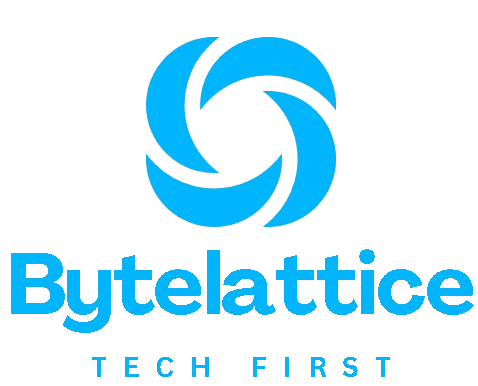
The financial world is experiencing a seismic shift. Once the undisputed gatekeepers of money, traditional banks face an unprecedented challenge from cryptocurrency and blockchain technology. This digital revolution isn’t just changing how we think about money—it’s completely rewriting finance rules.
Banks have dominated financial services for centuries. They’ve controlled everything from basic savings accounts to complex international wire transfers. But cryptocurrency is changing that dynamic in ways most people never imagined possible.
This article examines how digital currencies are reshaping banking operations. We’ll explore the inefficiencies crypto addresses, the new payment systems emerging, and the opportunities for financial inclusion. Most importantly, we’ll examine how traditional banks respond to this disruption.
High Transaction Costs and Inefficiencies
Traditional banking systems carry massive overhead costs. Every transaction passes through multiple intermediaries, each taking its cut. When you send money internationally, your bank coordinates with correspondent banks, clearinghouses, and regulatory bodies. This process can take days and cost significant fees.
Cryptocurrency eliminates many of these intermediaries. Bitcoin transactions, for example, can be verified and settled within minutes for a fraction of traditional wire transfer costs. The blockchain network handles verification through a decentralized system of computers rather than an expensive banking infrastructure.
Consider this: a typical international wire transfer costs between $15-50 and takes 1-5 business days. Bitcoin transactions average under $5 and settle within an hour. Ethereum-based stablecoins offer even faster settlement times. These efficiency gains represent billions in potential savings across the global financial system.
Banks are taking notice. JPMorgan Chase developed JPM Coin specifically to reduce settlement times for institutional clients. The bank reports significant cost savings compared to traditional SWIFT transfers. Goldman Sachs has invested heavily in blockchain technology to streamline their trading operations.
Transforming Payment Systems

Payment systems built on blockchain technology operate 24/7 without traditional banking hours. This constant availability transforms how businesses and individuals manage cash flow. Small companies no longer wait for weekend transactions to clear on Monday morning.
Smart contracts add another layer of innovation. These self-executing contracts automatically process payments when predetermined conditions are met. A freelancer can receive payment immediately upon project completion without waiting for manual invoice processing.
Decentralized finance protocols have created entirely new payment rails. Users can lend, borrow, and trade without traditional banking intermediaries. Compound Finance, for instance, allows users to earn interest on cryptocurrency holdings at rates often exceeding traditional savings accounts.
The programmable nature of digital currencies enables payment features that are impossible with traditional money. Automatic bill payments, conditional transfers, and micro-transactions have become trivial to implement. This flexibility appeals especially to younger consumers who expect seamless digital experiences.
Enabling Cross-Border Transactions
Cross-border payments represent one of banking’s most inefficient areas. SWIFT, the dominant international payment network, was designed in the 1970s. Transactions route through multiple correspondent banks, creating delays, fees, and transparency issues.
Cryptocurrency networks operate globally from day one. A Bitcoin transaction from New York to Tokyo follows the same process across the street. This universal accessibility has profound implications for international commerce and remittances.
Remittances alone represent a $700 billion annual market. Traditional services like Western Union charge fees averaging 6-7% per transaction. Cryptocurrency-based remittance services offer the same service for under 2%. For families sending money across borders, these savings are substantial.
Stablecoins bridge the gap between cryptocurrency efficiency and fiat currency stability. USDC and USDT enable fast, low-cost international transfers while maintaining dollar-denominated value. Major payment processors like Visa and Mastercard now support stablecoin settlements.
Promoting Financial Inclusion
Traditional banking requires documentation, credit history, and minimum balances that exclude billions worldwide. The World Bank estimates 1.7 billion adults lack access to basic financial services. Cryptocurrency offers an alternative path to economic participation.
A smartphone and internet connection provide access to cryptocurrency networks. Users can store value, send payments, and access lending services without traditional bank accounts. This accessibility particularly benefits unbanked populations in developing economies.
Mobile money services in Africa demonstrate this potential. M-Pesa processes more transactions annually than traditional banks in many African countries. Cryptocurrency extends this model globally with features like programmable money and decentralized lending.
Central Bank Digital Currencies (CBDCs) represent governments’ response to cryptocurrency inclusion benefits. Countries like Nigeria and the Bahamas have launched digital versions of their national currencies. These CBDCs combine cryptocurrency accessibility with government backing.
Collaboration with Blockchain Firms
Rather than fighting cryptocurrency adoption, many traditional banks embrace collaboration. Partnerships with blockchain companies allow banks to integrate new technologies while maintaining regulatory compliance and customer relationships.
Goldman Sachs partnered with Circle to offer crypto trading services. Bank of America filed over 100 blockchain patents, more than any other financial institution. These moves signal strategic recognition of blockchain’s transformative potential.
Cryptocurrency custody services represent a growing revenue stream for traditional banks. Institutions need secure storage for digital assets but lack internal expertise. Banks leverage existing security infrastructure to offer crypto custody alongside conventional asset management.
Innovation labs within major banks experiment with blockchain applications. These partnerships often focus on trade finance, where blockchain’s transparency and efficiency provide clear benefits. Through blockchain automation, documentary credits and letters of credit have become more efficient.
Ensuring Security and Compliance
Security concerns around cryptocurrency are valid but often misunderstood. While high-profile hacks grab headlines, the underlying blockchain technology has never been successfully compromised. Most security breaches occur at exchanges or wallet providers, not the blockchain.
Traditional banks invest billions in cybersecurity yet still experience regular data breaches. Cryptocurrency’s cryptographic security offers advantages over conventional banking security models. Private keys provide a mathematical proof of ownership that is impossible to forge or duplicate.
Regulatory frameworks continue evolving to address cryptocurrency compliance needs. The Bank Secrecy Act now applies to cryptocurrency businesses, and anti-money laundering requirements ensure cryptocurrency exchanges maintain transaction records similar to traditional banks.
Compliance technology explicitly built for cryptocurrency often exceeds traditional banking standards. Blockchain analytics companies can more precisely trace cryptocurrency transactions than cash or wire transfers. This transparency enhances regulatory oversight.
Evolving Financial Landscapes
The financial landscape ten years from now will look dramatically different. Cryptocurrency adoption accelerates among both retail and institutional investors, and traditional banks must adapt or risk obsolescence.
Hybrid models combining traditional banking with cryptocurrency services are emerging. These approaches maintain regulatory compliance while offering cryptocurrency access. Customers benefit from FDIC insurance on deposits plus cryptocurrency investment options.
Competition drives innovation in ways beneficial to consumers. Traditional banks improve their services to compete with cryptocurrency alternatives. This competition reduces fees, increases transaction speeds, and enhances customer experiences across the financial sector.
Young consumers especially embrace cryptocurrency adoption. Studies show millennials and Gen Z prefer financial services that include cryptocurrency options. Banks targeting these demographics must offer crypto-friendly services to remain competitive.
Potential for Continuous Innovation
Blockchain technology enables financial innovations that are impossible with traditional systems. Decentralized autonomous organizations (DAOs) govern financial protocols through community voting and yield farming, which creates new income opportunities for cryptocurrency holders.
Non-fungible tokens (NFTs) represent digital ownership in ways that could transform everything from real estate to intellectual property. Traditional banks explore NFT custody and trading services to capture this growing market.
Layer 2 solutions address blockchain scalability concerns. The Lightning Network enables instant Bitcoin micropayments. Ethereum’s upcoming upgrades promise faster, cheaper transactions. These improvements make cryptocurrency more practical for everyday use.
Traditional banks that embrace innovation are leaders in the evolving financial ecosystem. Those that resist change risk losing customers to more agile competitors offering superior service through cryptocurrency integration.
Managing Market Volatility and Security Risks
Cryptocurrency volatility remains a significant challenge for mainstream adoption. Bitcoin’s price swings make it impractical for salary payments or stable savings. However, stablecoins address this concern by maintaining stable value relative to fiat currencies.
Risk management strategies developed for traditional assets apply to cryptocurrency portfolios. Diversification, dollar-cost averaging, and proper position sizing help manage volatility. Professional investors use these same techniques regardless of asset class.
Security best practices continue evolving as the cryptocurrency ecosystem matures. Hardware wallets provide offline storage for long-term holdings, and multi-signature wallets require multiple approvals for transactions. These security measures often exceed traditional banking protection.
Education plays a crucial role in risk management. Users who understand cryptocurrency fundamentals make better security decisions. Traditional banks offering cryptocurrency services include educational resources to help customers manage risks effectively.
How Could Blockchain Disrupt Banking?

Blockchain’s impact extends far beyond cryptocurrency payments. Trade finance, identity verification, and regulatory reporting all benefit from blockchain’s transparency and immutability. These applications could eliminate entire categories of traditional banking services.
Smart contracts automate complex financial agreements without human intervention. Loans can be collateralized, executed, and settled automatically based on predetermined conditions. This automation reduces costs while increasing reliability and speed.
Decentralized exchanges allow peer-to-peer trading without traditional intermediaries. Users maintain control of their assets throughout the trading process. This model challenges traditional brokerage services while reducing counterparty risk.
Open banking initiatives combined with blockchain technology create new possibilities for financial innovation. APIs enable third-party developers to build services on traditional banking infrastructure, while blockchain provides the underlying settlement layer.
Conclusion
Cryptocurrency’s disruption of traditional banking is accelerating rather than slowing down. The technology addresses inefficiencies in payment systems, cross-border transactions, and financial inclusion. Traditional banks that embrace this change position themselves for future success.
The relationship between cryptocurrency and traditional banking will likely become complementary rather than competitive. Banks provide regulatory compliance, customer service, and institutional expertise. Cryptocurrency provides efficiency, innovation, and global accessibility.
This transformation benefits consumers through lower costs, faster transactions, and greater financial access. The future of finance combines the best elements of traditional banking and cryptocurrency innovation.
ALSO READ:
FAQs
Q: Will cryptocurrency replace traditional banks entirely?
A: No, cryptocurrency and traditional banks will likely coexist. Banks provide services like customer support, regulatory compliance, and institutional relationships that cryptocurrency networks cannot easily replicate.
Q: Are cryptocurrency transactions more secure than traditional banking?
A: Cryptocurrency transactions use cryptographic security that has never been successfully compromised. However, users must properly manage their private keys. Traditional banks provide insurance protection that cryptocurrency currently lacks.
Q: How do central bank digital currencies differ from cryptocurrencies like Bitcoin?
A: CBDCs are government-issued digital versions of national currencies, while cryptocurrencies operate independently of government control. CBDCs maintain centralized authority, whereas cryptocurrencies use decentralized networks.
Q: What role do stablecoins play in disrupting traditional banking?
A: Stablecoins combine cryptocurrency efficiency with price stability, making them practical for everyday transactions and international transfers while avoiding the volatility of other cryptocurrencies.
Q: How are traditional banks adapting to cryptocurrency competition?
A: Many banks are partnering with blockchain companies, developing their digital currency services, and investing in cryptocurrency technology to remain competitive in the evolving financial landscape.
